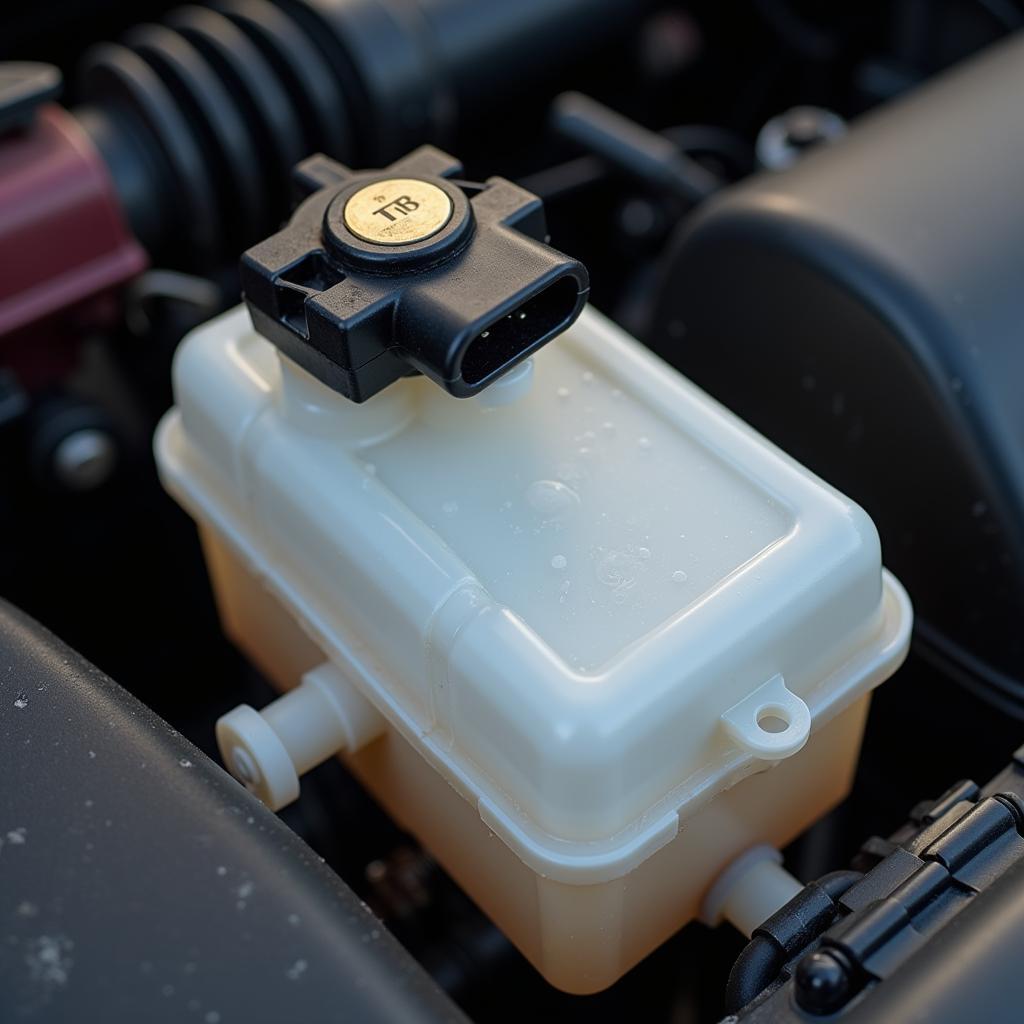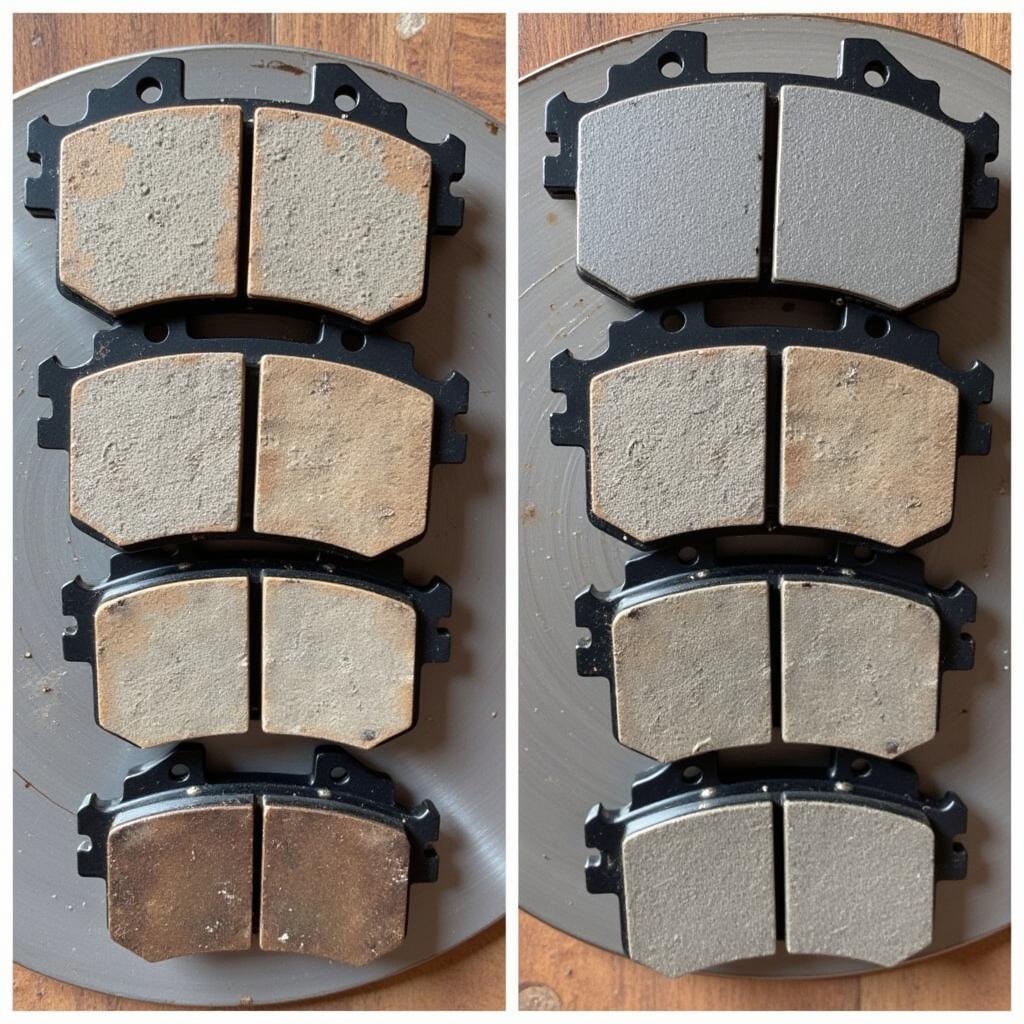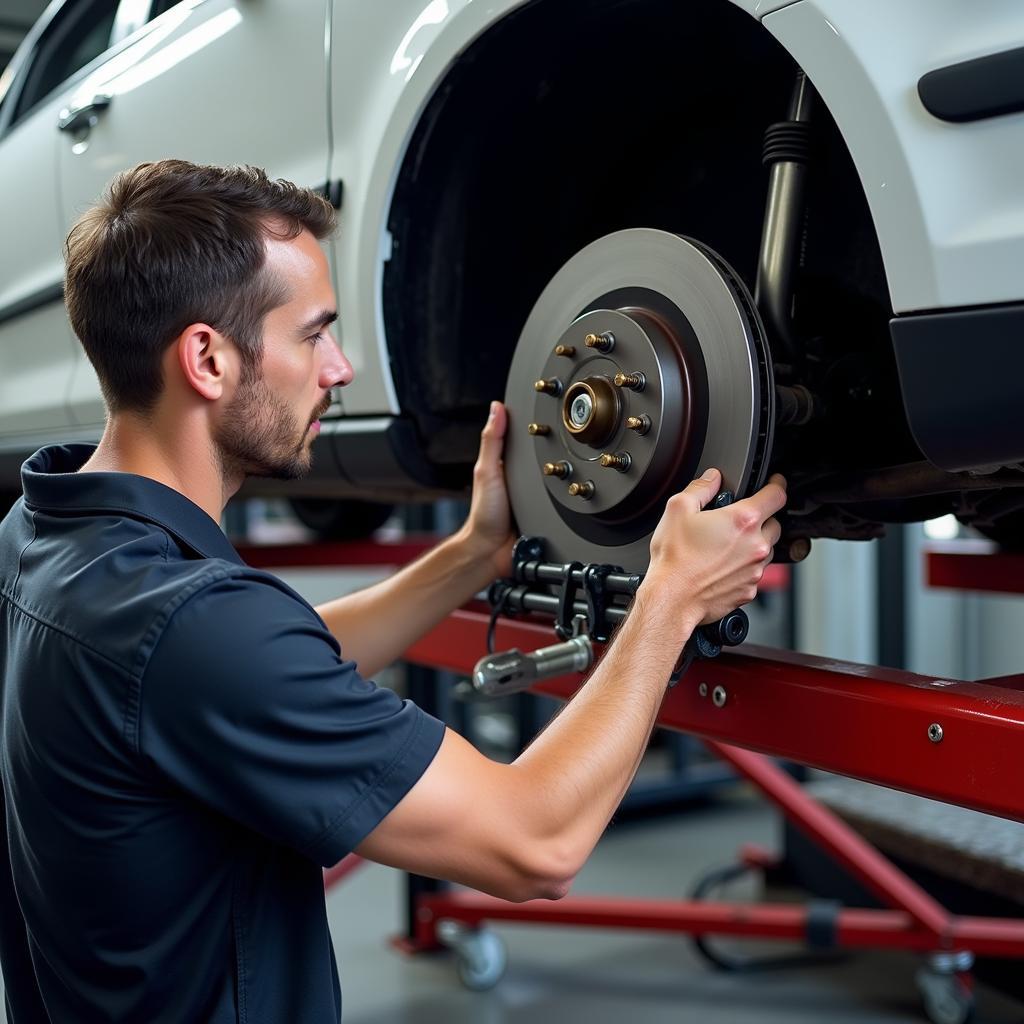The brake warning light on your dashboard is a crucial safety feature, designed to grab your attention when there’s a potential issue with your vehicle’s braking system. Ignoring it could lead to dangerous situations on the road. But what exactly does it mean when that red or yellow light flashes or stays illuminated? This comprehensive guide will delve into the common reasons behind a glowing brake warning light and provide insights on how to address them.
Common Culprits Behind a Brake Warning Light
Several factors can trigger your brake warning light. Here are some of the most prevalent causes:
-
Worn Brake Pads: This is the most frequent reason your brake warning light turns on. Brake pads have wear indicators that make contact with the rotor when they become too thin, triggering the light.
-
Low Brake Fluid: Brake fluid is the lifeblood of your braking system, transmitting force from the brake pedal to the wheels. A leak in the system can lead to a drop in brake fluid level, activating the warning light.
-
Faulty Brake Light Switch: The brake light switch, located near the brake pedal, signals the brake lights to illuminate when you press the brake. A malfunctioning switch can disrupt this signal and cause the brake warning light to come on.
 Brake fluid reservoir with level sensor
Brake fluid reservoir with level sensor
-
ABS Issue: Modern vehicles are equipped with Anti-lock Braking Systems (ABS), designed to prevent wheel lockup during hard braking. A problem with the ABS module or sensors can trigger the brake warning light.
-
Parking Brake Engaged: While seemingly obvious, sometimes the simplest explanation is the most likely. Forgetting to disengage your parking brake fully can trigger the warning light.
Understanding Your Brake Warning Light
The color of your brake warning light can offer clues about the severity of the issue:
-
Red Light: A solid red light typically indicates a critical problem requiring immediate attention. It could signify dangerously low brake fluid or a complete brake system failure.
-
Yellow Light: A yellow brake warning light usually signals an issue with the ABS. While you may still have conventional braking capability, the ABS might not function properly.
Troubleshooting Your Brake Warning Light
While a professional diagnosis is always recommended, here are some steps you can take to try and pinpoint the issue:
-
Check Your Parking Brake: Ensure the parking brake is fully disengaged.
-
Inspect Brake Fluid Level: Carefully open the brake fluid reservoir (refer to your owner’s manual for its location) and check the fluid level. If it’s low, there might be a leak.
-
Examine Brake Pads: If you’re comfortable doing so, you can visually inspect your brake pads for wear. Look for thin pads or metal-on-metal contact.
 Comparison of worn brake pads with new brake pads
Comparison of worn brake pads with new brake pads
When to Seek Professional Help
If you’re unable to identify the cause of the brake warning light or are uncomfortable performing the checks yourself, it’s crucial to seek immediate assistance from a qualified mechanic. Driving with a compromised braking system can have severe consequences.
Expert Insights
“Ignoring a brake warning light is like playing Russian Roulette with your safety,” says John Smith, a certified automotive technician with over 20 years of experience. “Even if your brakes seem to be working fine, there’s a reason that light is on. Get it checked out by a professional immediately.”
Preventive Measures for a Healthy Braking System
-
Regular Brake Inspections: Schedule routine brake inspections with a qualified mechanic, ideally every 12,000 miles or as recommended by your vehicle manufacturer.
-
Timely Brake Pad Replacement: Replace worn brake pads promptly to prevent damage to rotors and other brake components.
-
Quality Brake Fluid: Use high-quality brake fluid and ensure it’s flushed and replaced according to your vehicle’s maintenance schedule.
 Mechanic inspecting a car's brake system
Mechanic inspecting a car's brake system
Conclusion
Your vehicle’s brake warning light is a critical safety feature that should never be ignored. By understanding the common causes behind its illumination and taking prompt action, you can ensure the continued reliability of your braking system and prioritize your safety on the road. Remember, when it comes to brakes, erring on the side of caution is always the wisest course of action.
Don’t hesitate to seek professional help if you suspect any issues with your braking system. Safe driving!
